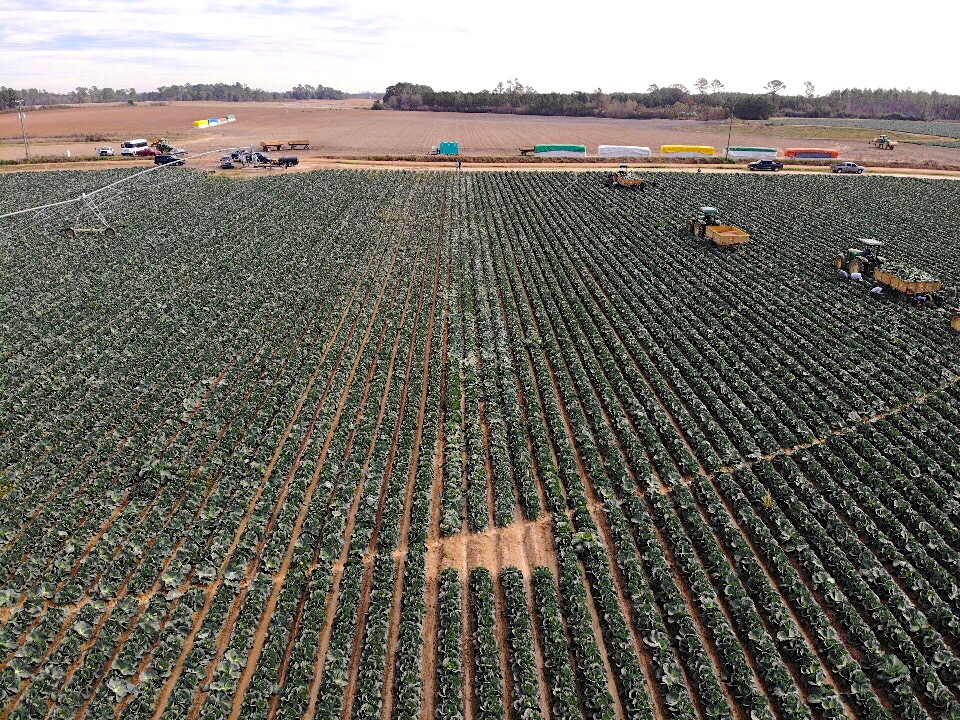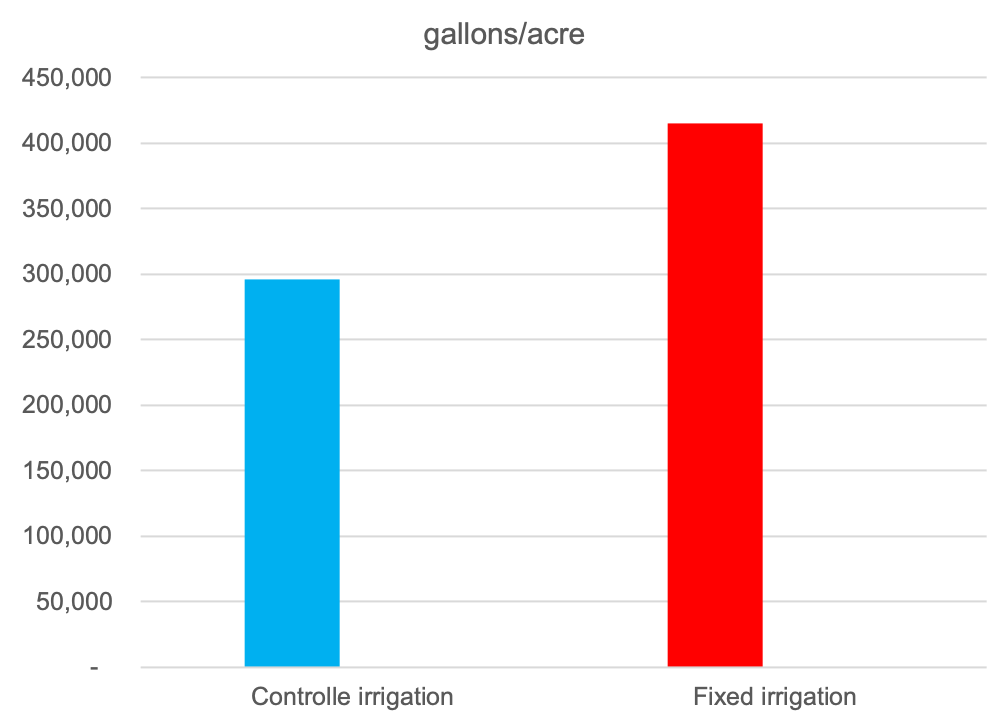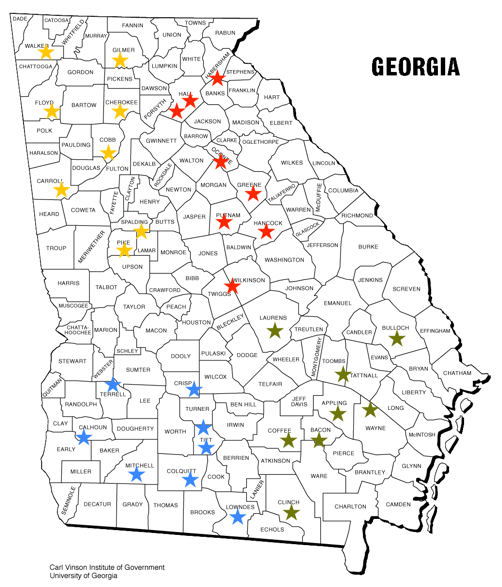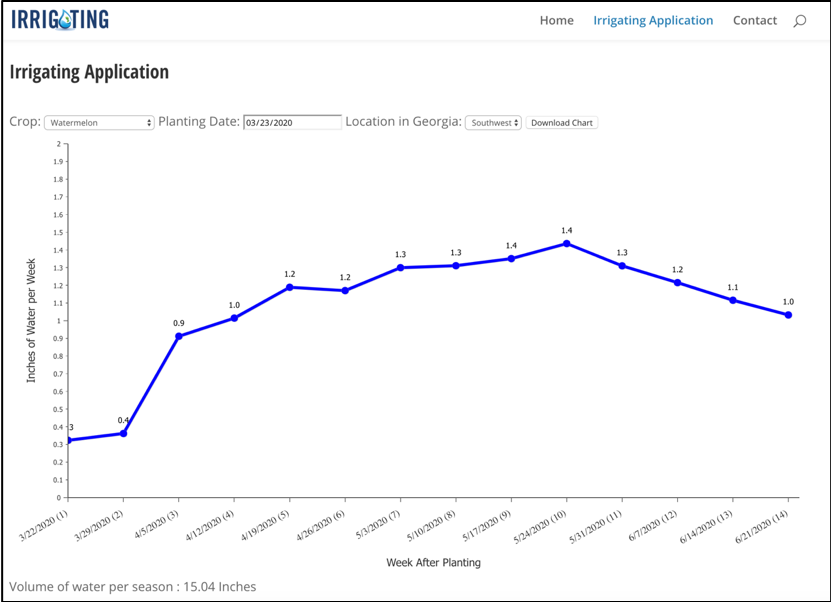Written By: Emily Cabrera, IPM Communications Coordinator
Expert Source: Andre Da Silva, Extension Vegetable Specialist

Not all irrigation schedules are managed the same. And while that may seem obvious, there’s actually a huge difference in yields and savings that can be had with implementing a more tailored irrigation regime on-farm. University of Georgia Extension Vegetable Specialist Andre da Silva recommends taking some time before the growing season gets into full swing to prepare irrigation systems that allow growers to monitor soil moisture content as well as crop evapotranspiration. He explains several preferable irrigation methods in a little more detail in this short video.
The following table provides a score for each method on a scale of zero to five, with zero signifying the least effective practice and five being the best practice.
| Rank | Irrigation scheduling level | Irrigation water management |
| 0 | Irrigate whenever | Water is applied with no set schedule. |
| 1 | “Feel and Appearance” method | Water is applied according to the irrigation manager’s feeling and comparison of sampled soils with photos. |
| 2 | Systematic irrigation method | Water is applied on a time or volume basis, regardless of weather and soil water conditions. |
| 3 | Crop water demand method | This method consists of calendar-based scheduling according to previous seasons, where water is applied according to the crop evapotranspiration (ETc). This method should account for rainfall events. |
| 4 | Soil water status method | Water application is based on soil moisture content, typically, supplying a percentage of soil available water in the crop root system. This method should account for rainfall events. |
| 5 | Water budgeting method | Irrigation is adjusted based on water budgeting by accounting crop evapotranspiration and soil moisture content in the crop root zone. |
“Growers often use a fixed continuous irrigation schedule during the growing season because it is a low maintenance approach that ensures water is being applied to crops on a regular basis,” explained Da Silva, “but this is like a wolf in sheep’s clothing, water is being applied regularly but it may not be enough or it may be excessive, thereby, putting undue stress on plants and weakening their root system and natural abilities to defend themselves against pest and disease attack.”
Da Silva explained that the most effective approach for irrigating crops should include the crop water demand, also known as the crop’s evapotranspiration rate, and in the best case, monitoring soil moisture levels as well.
Da Silva says to imagine the structure of soil and its relationship with water as being similar to a sponge. If you place a sponge in a bucket of water, it will absorb the water. If you were to remove the sponge it would begin dripping. This, da Silva says, is similar to “soil saturation”. Gravity will pull water out of the larger pores of the sponge, but water will remain tightly held in the smaller pore spaces. When the sponge is no longer dripping but is still moist, we can liken it to what’s called the “field capacity” of a soil. Field capacity is defined as the maximum amount of water the soil can hold, but as water continues to drain and is also taken up through the root systems, the sponge (or soil) will become almost completely dry. This is the point where plants can no longer readily draw water from the soil and is referred to as the “permanent wilting point”. Although water can be supplied for plants after the permanent wilting point, if a soil reaches the permanent wilting point during crop development, the yield will have already been penalized.
Soils are vastly different across the southeast, and even from field to field, so it’s critical for growers to think about this process of saturation, field capacity and permanent wilting point so as not to use one standard irrigation schedule, but rather a more site-specific system.
Da Silva recommends monitoring soil moisture content by installing sensors throughout fields.
Monitoring soil moisture status allows growers to detect plant stress before the plant displays obvious signs of stress. Avoiding this unneeded stress can provide more optimal growth, increase yields, and enhance the overall quality of the crop. This may also help the grower avoid overwatering, thereby decreasing potential water-logging of the roots, root diseases, unnecessary water use, and nutrient leaching from the root zone. Soil moisture monitoring probes and sensors are available from a number of vendors and come in many forms, shapes, and sizes. Some probes are directly installed into the soil near the crop root zone while others measure canopy temperature from above to indirectly quantify soil moisture status. The majority of soil moisture sensing technology on the market allows the farmer to use the internet to securely log in and access real-time data on which to base an irrigation decision.

Da Silva points to his recent study that looked at two irrigation schedules in bell pepper production, a fixed schedule set to apply water every two hours continuously, and a controlled schedule that applied water depending on soil moisture sensors set at the soil field capacity (FC). The results showed that using a controlled irrigation schedule produced larger bell peppers than a fixed irrigation schedule.

<– Controlled Irrigation
<– Fixed Continuous Irrigation
While both irrigation methods provided water to the plants, the controlled irrigation schedule produced higher yields. The other noteworthy finding from this research was the significant reductions in water usage and costs from implementing a controlled irrigation schedule.

Da Silva says one of the best thing growers can do this upcoming season is spend a little time setting up irrigation systems that utilize a combination of soil moisture sensors and understand the crop water demand of your crops.
“The University of Georgia has this amazing online tool that’s completely free and will tell you specific crop water demands throughout the season for your location in the state,” explains da Silva. The calculator can be found at irrigating.uga.edu.

Data is collected throughout the state at various stations to help generate more site-specific calculations.

The UGA-Irrigating app can also be downloaded on any smart device.